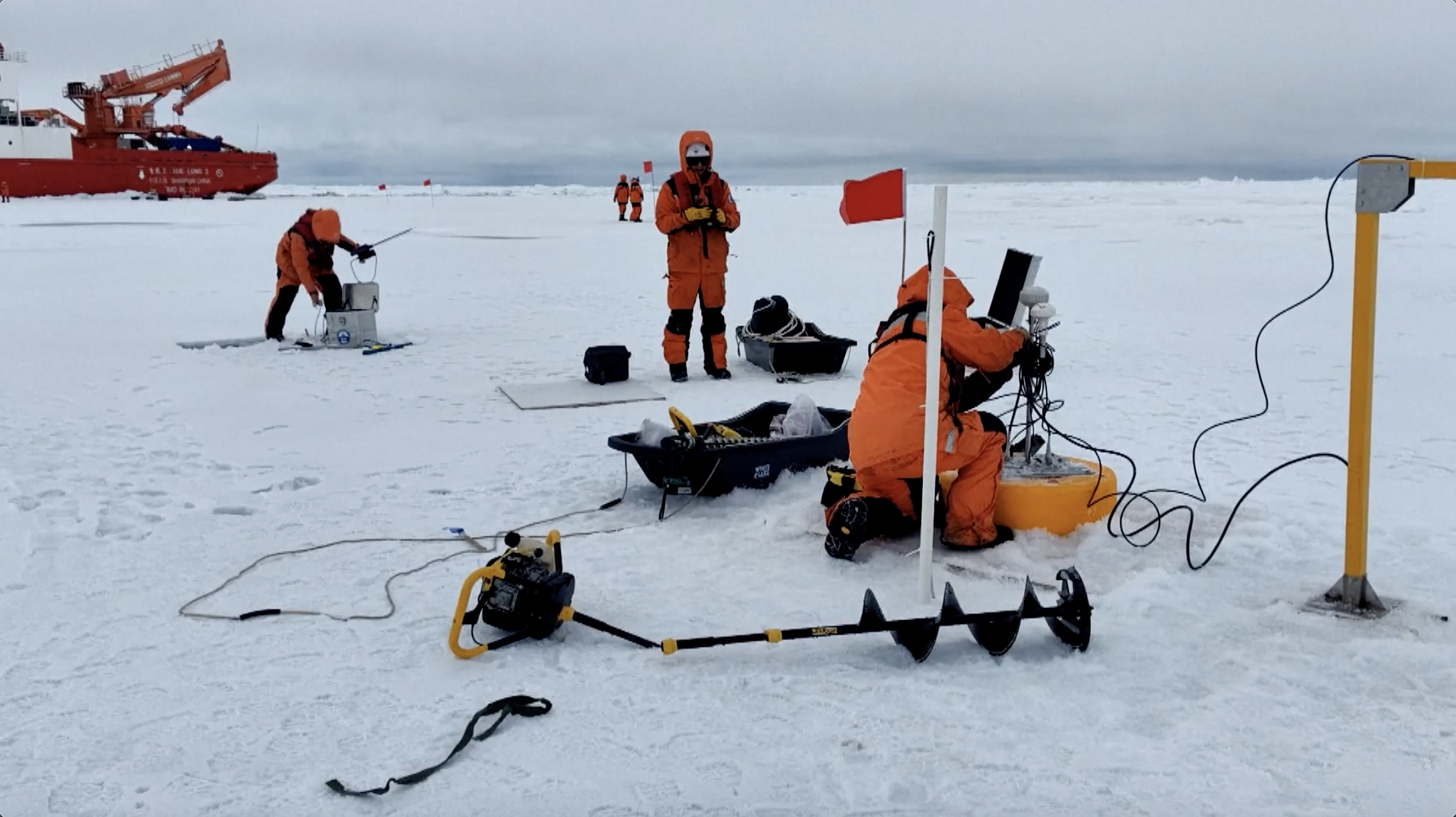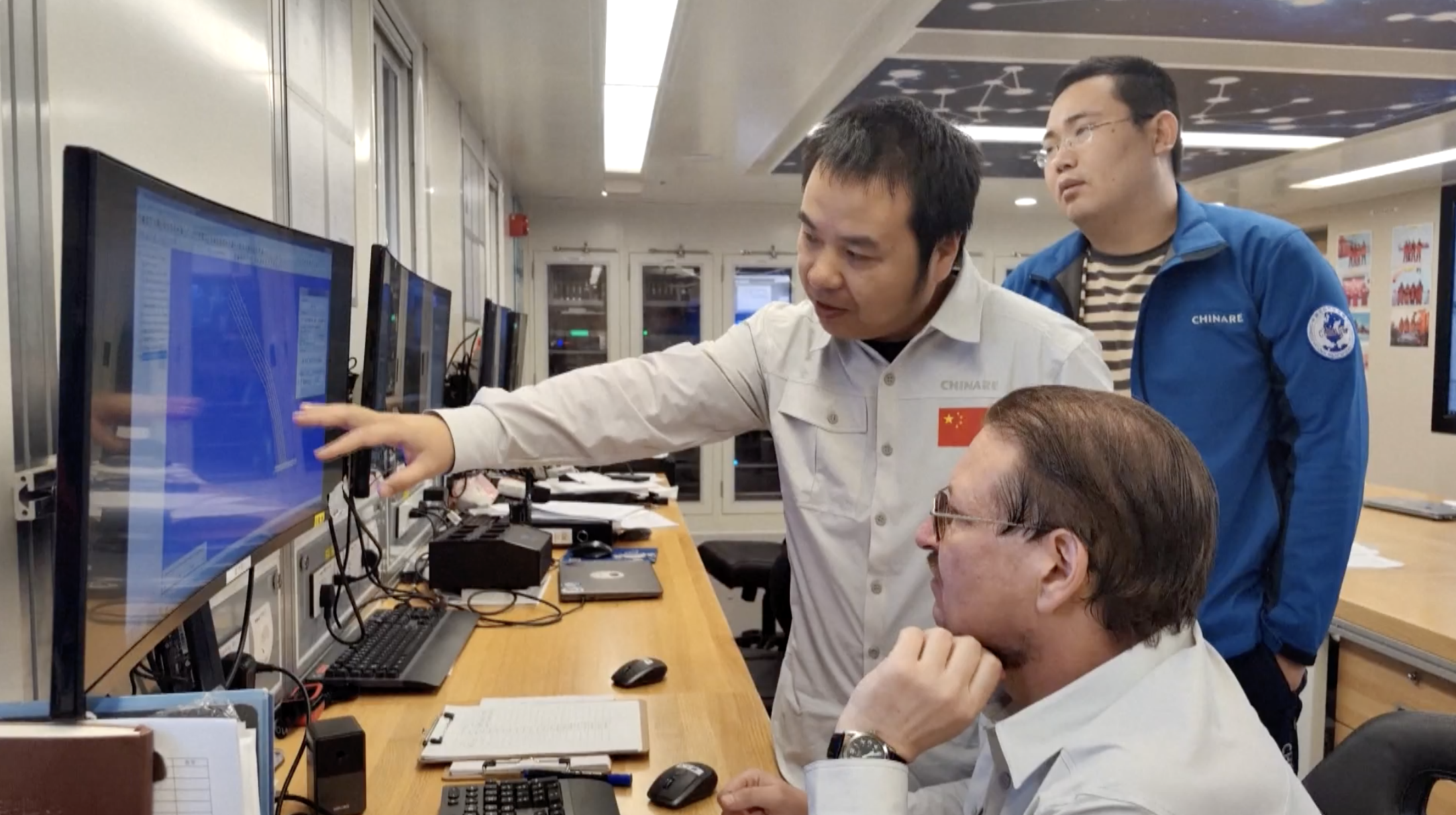China's research icebreaker "Xuelong 2" returned to Shanghai on September 27 after finishing a series of scientific research missions and making multiple breakthroughs deep in the Arctic.
The massive ship, whose name means "Ice Dragon," set off on July 12 and traveled over 15,000 nautical miles in 78 days. It carried the country's 13th Arctic Ocean scientific expedition team.
A major objective of the mission, organized by the Ministry of Natural Resources, was to investigate the geology and geophysics of mid-ocean ridges and to study atmospheric, marine, subsurface and sea ice environmental conditions, as well as biomes and pollutants.

Scientists install equipment and collect samples in the Arctic region. /CMG
Scientists install equipment and collect samples in the Arctic region. /CMG
"In this scientific expedition, we've collected a large amount of data and samples for both long-term observation and monitoring and in major national scientific research. This will help us gain a more accurate understanding of the dynamics of sea ice and the thermodynamic processes, and it means a lot in further improving China's sea ice model," said Chen Zhi, chief scientist of the 13th Arctic Ocean scientific expedition team.
The icebreaker's landmark accomplishment was reaching the North Pole to conduct ice investigations and marine synthetic surveying. It was the first time a Chinese vessel ever reached that point.
Along the way, long-term monitoring of key environmental elements in 49 stations involved multiple tests on sea surface meteorology, sea ice, and ship stress, which resulted in a large amount of valid data.

Chinese and foreign scientists discuss during the research. /CMG
Chinese and foreign scientists discuss during the research. /CMG
Investigations were also carried out on mid-ocean ridges, which are systems of mountains on the ocean floor. Eight tasks, including seismic surveys and geology sampling, were completed to that end.
In addition to that, 44 national science and technology planning projects involving such subjects as sea ice, circulation and black carbon were completed as well.
In terms of international cooperation, the team successfully completed scientific research and international cooperation projects with Thailand and Russia as planned. It was the first time that a China-Thailand cooperation project was carried out in the Arctic Ocean expedition, shedding light on the study and management of global micro-plastic pollution.
"The successful completion of the 13th Arctic Ocean scientific expedition and its breakthroughs have further improved China's ability regarding environmental protection, evaluation of pollutants and response to the rapid changes in the Arctic Ocean. They will also enhance China's understanding and protection of the Arctic," said Wang Jinhui, head of the 13th Arctic Ocean scientific expedition team.
For more:
Chinese scientists complete multiple geophysical experiments during Arctic Ocean expedition
The North Pole Expedition: What do we know about the 13th Arctic Ocean scientific expedition?
(All images via CMG)
(If you have specific expertise and want to contribute, or if you have a topic of interest that you'd like to share with us, please email us at nature@cgtn.com.)